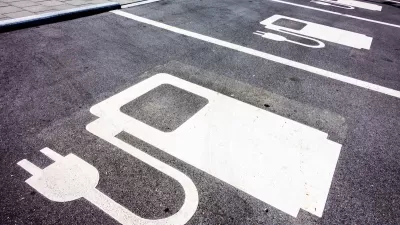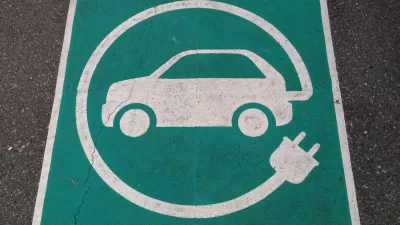The Oregon Department of Transportation plans to install EV chargers along crucial transportation corridors and expand charging options around the state to encourage more Oregonians to buy electric vehicles.

The Oregon Department of Transportation (ODOT) wants to support the electrification of the transportation sector by pledging $100 million to electric vehicle charging infrastructure. An article from KTVS outlines the agency’s plan, which will use federal and state funds to increase access to EV chargers and build charging stations along key transportation corridors in the state.
“Amanda Pietz, administrator for ODOT’s Policy, Data & Analysis Division, said more EV charging infrastructure will help motivate Oregonians to choose an EV for their next car, SUV or bicycle,” citing “range anxiety” as a common deterrent for potential EV buyers. According to Pietz, “This investment will build Oregonians’ confidence that an EV can fit into their life and get them where they need to go.”
“About two-thirds of the funding — $52 million from the 2021 federal infrastructure bill plus a required 20% match — must be spent on EV charging infrastructure along “Alternative Fuel Corridors,” as per guidance from the Federal Highway Administration.” Oregon has seven such corridors that would qualify for federal funds. One-third of the promised funds will go toward projects in other parts of the state.
In addition to charging stations for light-duty vehicles, “The new charging sites will be able to serve some medium-duty vehicles, and ODOT will explore opportunities to add micromobility charging.”
FULL STORY: ODOT commits $100 million to electric vehicle charging infrastructure

Alabama: Trump Terminates Settlements for Black Communities Harmed By Raw Sewage
Trump deemed the landmark civil rights agreement “illegal DEI and environmental justice policy.”

Planetizen Federal Action Tracker
A weekly monitor of how Trump’s orders and actions are impacting planners and planning in America.

Why Should We Subsidize Public Transportation?
Many public transit agencies face financial stress due to rising costs, declining fare revenue, and declining subsidies. Transit advocates must provide a strong business case for increasing public transit funding.

Judge Orders Release of Frozen IRA, IIJA Funding
The decision is a victory for environmental groups who charged that freezing funds for critical infrastructure and disaster response programs caused “real and irreparable harm” to communities.

‘Clybourne Park’ Sets Stage for Housing Equity Discussions
Clybourne Park, a play exploring race, real estate, and community tensions, can set the stage for discussion on the lasting impacts of housing discrimination, gentrification, and the fight for affordability.

Understanding Road Diets
An explainer from Momentum highlights the advantages of reducing vehicle lanes in favor of more bike, transit, and pedestrian infrastructure.
Urban Design for Planners 1: Software Tools
This six-course series explores essential urban design concepts using open source software and equips planners with the tools they need to participate fully in the urban design process.
Planning for Universal Design
Learn the tools for implementing Universal Design in planning regulations.
Caltrans
Smith Gee Studio
Institute for Housing and Urban Development Studies (IHS)
City of Grandview
Harvard GSD Executive Education
Toledo-Lucas County Plan Commissions
Salt Lake City
NYU Wagner Graduate School of Public Service





























